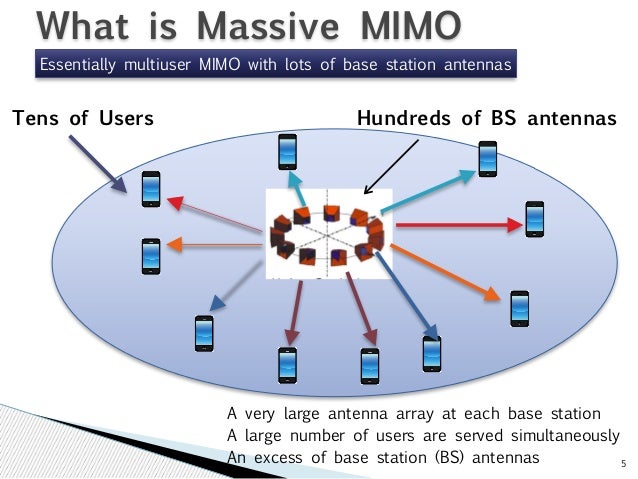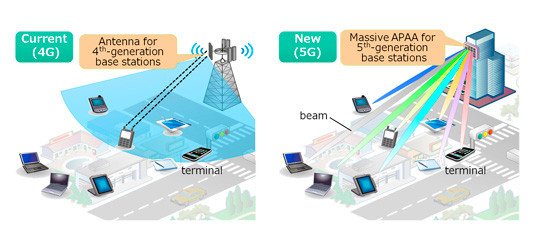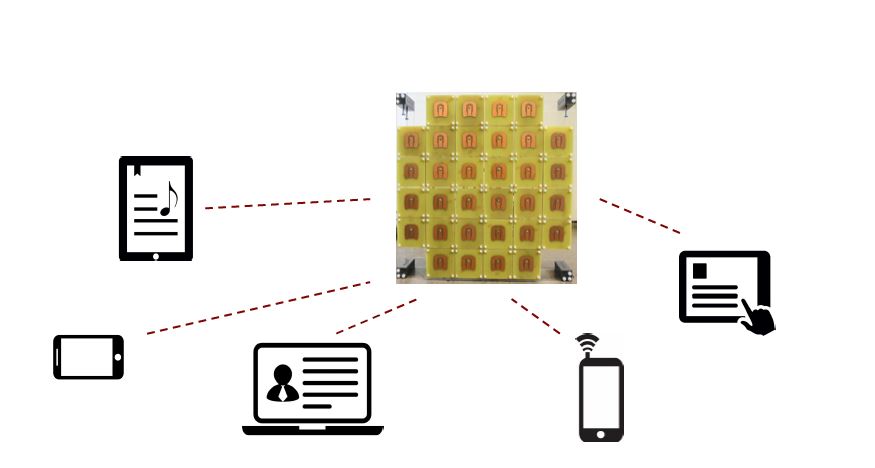Massive MIMO
Mavenir and Xilinx Collaborate on Massive MIMO for Open RAN
Mavenir, an upstart end-to-end cloud-native network software provider and Xilinx, a leader in adaptive computing, announced today the companies are collaborating to bring to market a unified 4G/5G O-RAN massive MIMO (mMIMO) portfolio to enable Open RAN deployments. The first mMIMO 64TRX joint solution is expected to be available in Q4 2021.
Working together, the two companies have successfully completed end-to-end integration of a first-generation mMIMO solution using Open RAN principles. Held at the Mavenir Lab in Bangalore, India, the integration covered multiple deployment scenarios and was evaluated by six CSPs, all leading global operators. Mavenir delivered the Virtualized RAN (vRAN) support for mMIMO, including Core Network, CU and DU, with Xilinx providing the Category B O-RAN Radio Unit.
“This integration demonstrates an efficient Open RAN massive MIMO solution to achieve diversification of the telecommunications supply chain,” says Pardeep Kohli, President and CEO, Mavenir. “This is an important milestone in the delivery of open and interoperable interfaces enabling the deployment of mMIMO in high density, high mobile traffic metro areas.”
“We were early proponents of Open RAN technology along with Mavenir and actively led in standards development in the industry through many field trials around the world,” said Liam Madden, executive vice president and general manager, Wired and Wireless Group at Xilinx. “With the investment we have done on our market-leading wireless radio technology and massive MIMO R&D, we are excited to collaborate with Mavenir to bring our collective technology and radio system expertise together that will accelerate the deployment of market leading 5G O-RAN massive MIMO radio solutions.”

With history of leadership success in various 4G and 5G network deployments worldwide, the companies are jointly developing the next generation of mMIMO products which will bring the world’s first O-RAN compliant 64TRX mMIMO products that support up to 400MHz instantaneous bandwidth in a compact form factor. Mavenir’s vRAN software supports Multi-User MIMO with up to 16 layers, advanced receiver algorithms, full digital beamforming – all running on Mavenir’s open and flexible cloud-native platform, as well as on other cloud platforms.
These products will leverage Xilinx’s technology platform including RFSoC DFE and Versal AI for advanced beamforming, delivering a fully integrated hardware and software O-RAN compliant mMIMO solution.
The wireless industry’s focus is squarely set on massive MIMO as mid-band spectrum 5G deployments continue, particularly following the record high mid-band 5G spectrum auction that concluded in the U.S. earlier this year. Massive MIMO is especially important in mid-band 5G networks because it allows operators to densify network coverage, increase capacity and coverage, and reduce the need for incremental outdoor sites, all of which translates to less labor and lower costs.
Mavenir and Xilinx have not yet disclosed the specifications for the equipment, but claim the equipment at the top of the portfolio will feature a 64-antenna array for transmitting and receiving signals and support up to 400 megahertz of bandwidth. The initial supply of radios will support C-band spectrum in the U.S., and the companies plan to later support mid-band spectrum for 5G deployments in Europe, the Middle East, and India.
The vendors are coming together to prove that “open RAN massive MIMO radios are a reality, and we will deliver that to the market. Our first open RAN massive MIMO radio will be labs ready by early Q4 and field-trial ready by the end of the year,” said Gilles Garcia, a senior director at Xilinx.
“5G Open RAN has significant momentum in the market with ABI Research forecasting network vendor spending to reach $10 billion by 2026-27 and then surpass traditional RAN at $30 billion by 2030,” said Dimitris Mavrakis, senior research director of 5G at ABI Research.
“As Mavenir and Xilinx continue to work together to accelerate O-RAN-based massive MIMO adoption, their solutions will be well-timed to serve this high-growth market with the higher spectral efficiency, performance, power efficiency and cost needed as 5G demand intensifies.”
Sprint’s Next-Gen Network and Massive MIMO as “linchpin for 5G”
Sprint said today in a press release that it’s Next-Gen Network build is well underway as we invest billions to give Sprint customers an even stronger 4G – LTE Advanced network (true 4G) and launch mobile 5G (fake-non standard) in the first half of next year. CTO John Saw wrote:
The Sprint Next-Gen Network build stems from our largest investment in years, and we’re unleashing our spectrum assets to improve coverage, reliability and speed nationwide as we work to launch mobile 5G in the first half of 2019.
Massive MIMO is our award-winning strategy for 5G. This game-changing technology is capable of delivering up to 10 times the capacity of current LTE systems, significantly increasing data speeds for more customers in high-traffic locations. And because Sprint has so much 2.5 GHz spectrum, we can use Massive MIMO to deliver 4G LTE and 5G on the same radio simultaneously.
In our first quarter of FY18 we continued field testing and optimizing Massive MIMO radios in locations such as Dallas, Los Angeles and New York City. Some sites are now running commercial traffic and the initial performance results are very promising. Today we’re seeing a more than 4X increase in speed on these sites, as well as increased coverage and cell edge performance.
When it comes to 5G, the network is only part of the equation. This is why we’re excited to keep making progress on our first 5G smartphone and Always Connected PC. In the first half of 2019 we plan to launch mobile 5G in nine markets initially – Atlanta, Chicago, Dallas, Houston, Kansas City, Los Angeles, New York City, Phoenix and Washington, D.C. And we expect Sprint customers will be among the first in the world to have access to a beautifully designed 5G phone.
It’s an exciting time to be in wireless with LTE networks rapidly advancing and 5G on the near horizon. You’ll see us accelerate our build activity in the months ahead. More triband upgrades, more innovative small cells, and more game-changing Massive MIMO powering a Network Built for Unlimited.
These technologies and more all play a pivotal role in improving the network experience for our customers under any scenario. If Sprint proceeds as a standalone company, our investment helps us continue improving our 4G LTE Advanced network, and launch mobile 5G in the first half of next year. If the merger with T-Mobile is approved, our investment helps the combined company rapidly create the best nationwide mobile 5G network, fueling a wave of innovation and disruption throughout the marketplace.
In March 2018, Saw told RCR Wireless: “Massive MIMO is our secret weapon to getting 5G built simultaneously with 4G. You need two enabling things. One is massive MIMO. I was just in a meeting with [Ericsson] to see if they can do more faster. The second thing is spectrum.” Sprint is tapping its 2.5 GHz spectrum to support the massive MIMO build. That theme was echoed last week during Sprint’s fiscal first quarter 2018 earnings call.
“We now have a few massive MIMO sites on air,” Sprint’s new CEO, Michel Combes, said Wednesday, adding that the 2.4GHz massive input, massive output (massive MIMO) arrays are “5G-ready” with a software upgrade for the mobile 3rd Generation Partnership Project (3GPP) New Radio specification. “We expect to provide mobile services and devices in the first half of 2019,” Combes said. (See Sprint Reveals 3 More 5G Cities, Promises ‘Cool’ 5G Phone & Small Cell and Intel Promises 5G Laptops With Sprint in 2019). Specifically, Combes said on the earnings call:
We are deploying innovative 5G technologies such as Massive MIMO as we prepare to launch the first 5G mobile network in the first half of 2019. Massive MIMO radios are software upgradable to 5G NR allowing us to fully utilize our spectrum for both LTE and 5G simultaneously while we enhance capacity even further with 5G and begin to support new 5G use cases. We now have a few Massive MIMO sites commercially on air in a few markets and are seeing very promising results, including speed improvements of over 300% while also increasing coverage and cell edge performance.
Sprint’s priority is mobile 5G and we expect to provide commercial services and devices by the first half 2019. Most importantly, as we look ahead, it’s clear that our proposed merger with T-Mobile will deliver an acceleration of an even greater 5G network with the breadth and depth that we could not do on our own.
Sprint has previously said that massive MIMO will be deployed in its initial 5G cities first. Sprint has so far named Atlanta; Chicago; Dallas; Houston; Kansas City; Los Angeles; New York City; Phoenix; and Washington, D.C., as its first 5G markets.
Massive MIMO will enable Sprint to run both LTE and 5G on its 2.5GHz band, CTO John Saw noted on the call. It is taking advantage of its higher-band spectrum to deploy 64 transmitters and 64 receivers (64T64R) in an array. It has already shown over 600-Mbit/s downloads on LTE over MIMO in New Orleans. (See Gigabit LTE: Sprint’s MIMO Gras in New Orleans).
Separately, Sprint now seems more open to using millimeter wave if it can buy licenses at auction in November. “It’s an excellent opportunity to supplement our 2.5GHz portfolio for our 5G deployment,” Combes said.
CTO Saw has said that LTE speeds in its initial 5G markets are seeing a four-times increase in download speeds, although CEO Combes noted on the earnings call that Sprint can build a better 5G network if its merger with T-Mobile is approved. (See Getting Real About Mobile 5G Speeds). New Sprint CFO Andrew Davies noted that capital expenditure for the quarter was “relatively flat” year-on-year, at $1.1 billion. Network spending will ramp up with the 5G build this year, to $5 billion or $6 billion.
References:
https://seekingalpha.com/article/4193250-sprint-s-q1-2018-results-earnings-call-transcript
https://techblog.comsoc.org/2018/02/03/sprint-to-increase-capex-to-focus-on-mobile-5g-in-2019/
Verizon, Qualcomm, and Ericsson collaborate on successful Massive MIMO Trial
Verizon said in a press release that it completed the first successful FDD (Frequency Division Duplexing) massive MIMO (Multiple Input Multiple Output) trial with a fully compatible customer device thanks to its collaboration with Ericsson and Qualcomm. The trial included the use of the latest Ericsson massive MIMO software and hardware along with a mobile test device powered by Qualcomm’s Snapdragon 845 Mobile Platform with an X20 LTE modem.
According to the aforementioned press release:
Massive MIMO is a key technology component in the evolution towards 5G. It has the potential of greatly improving network capacity and the customer’s experience. To realize the gains, both the network and devices need to support new TM9 [1] functionality which leverages advanced beam forming schemes between the network equipment and the mobile device. This will raise network spectral efficiency and customer speeds.
Note 1. In 3GPP Release-10 (LTE-Advanced) Transmission Mode 9 (TM9) was introduced. TM9 is designed to help reduce interference between base stations to maximise signal stability and boost performance. The new TM-9 enables the enhancement of network capabilities and performance with minimum addition of overhead. More information on TM9 is here.
………………………………………………………………………………………………………..
Qualcomm introduced the 845 Mobile Platform at the Snapdragon Summit in Hawaii in early December. The trial comes after Verizon and Ericsson deployed massive MIMO on the wireless carrier’s Irvine, Ca network in late October.
“We don’t wait for the future, we build it. And this is another great example of moving the industry forward,” Verizon Chief Network Engineer and Head of Wireless Networks Nicola Palmer said in the release. “Massive MIMO is a critical component of our 4G LTE Advancements and will play an important role in 5G technology that will result in single digit latency and scalability in the billions of connections,” he added.
Joe Glynn, vice president, business development at Qualcomm Technologies, Inc. said: “This milestone further demonstrates Qualcomm Technologies’ leadership and commitment to continually bring innovative technologies to consumers to improve their mobile experiences. We look forward to continuing our work with Verizon and Ericsson to push the limits of LTE while ushering in a world of 5G.”
Massive MIMO is an LTE Advanced (4G) technology which has been described as being akin to a set of focused flashlights targeting users rather than a single floodlight. The high number of transmitters enables more possible signal paths and beam forming, which directs the beam from the cell site directly to where the customer is located, dramatically cutting down on interference.
Figure 1. Massive MIMO exploits large antenna arrays to spatially multiplex many terminals.
……………………………………………………………………………………………………………………………….

Figure 2. Active Phased Array Antenna (APAA) shown above right in 5G base stations. The combination of analog beam forming via APAA and digital MIMO signal processing for the multi-beam multiplexing is believed to be one of the promising approaches for reducing the complexity and power consumption of 5G base stations. However, that has yet to be proven in a commercial 5G deployment.
………………………………………………………………………………………………………………………………….
In October, Verizon and Ericsson announced they had achieved a milestone in LTE Advanced technologies by completing their first deployment of FDD massive MIMO on Verizon’s wireless network in Irvine, California. Massive MIMO improves both spectral and energy efficiency, increasing network capacity for currently compatible devices in the market. Customers experience higher and more consistent speeds when using apps and uploading and downloading files.
Ericsson’s massive MIMO portfolio is expected to be available next year, putting it in line with commercial smartphones with the TM9 compatible chipset, which are expected to hit the market in the first half of 2018.
The past year saw a lot of talk around massive MIMO, which is considered by many to be a foundation technology for 5G. At the inaugural Mobile World Congress Americas in September, Sprint and Ericsson unveiled results of 2.5 GHz massive MIMO field tests conducted in Seattle and Plano, Texas, using Sprint’s spectrum and Ericsson’s radios.
- In early September, Ericsson said massive MIMO was part of a trial with T-Mobile US using mid-band FDD spectrum on three sites in Baltimore, Maryland.
- In February, Blue Danube Systems announced the completion of commercial trials using its massive MIMO technology in licensed FDD LTE spectrum with AT&T and Shentel.
Niklas Heuveldop, Head of Market Area North America, Ericsson, said: “Advanced Antenna Systems and Massive MIMO are key technology enablers for 5G, and 4G LTE service providers and end users will also benefit from the superior capacity and network performance these technologies enable. The latest trial is another important step in the collaboration we have with Verizon and Qualcomm Technologies to further evolve 4G and prepare the network for 5G.”
The Ericsson Massive MIMO portfolio is expected to be available next year, putting it well in line with commercial smartphones with the TM9 compatible chipset, which are expected to hit the markets in the first half of 2018.
References:
http://www.samsung.com/global/business-images/insights/2017/Massive-MIMO-Comes-of-Age-0.pdf
http://www.ni.com/white-paper/52382/en/
https://techblog.comsoc.org/2017/10/17/mimo-starting-to-realize-its-full-potential-in-lte-networks/
https://www.everythingrf.com/News/details/2639-zte-completes-massive-mimo-tests-for-imt-2020-5g
https://arxiv.org/pdf/1612.03993.pdf
Verizon, Ericsson Team Up for Massive MIMO Deployment
Verizon and Ericsson have deployed frequency division duplexing (FDD) Massive Multiple Input-Multiple Output (MIMO) technology on the Verizon’s wireless network in Irvine, Calif., a step forward in implementing “5G” wireless communications. Ericsson provided 16 transceiver radios and 96 antenna elements in an array for the deployment.
The two companies say the Massive MIMO deployment will improve spectral and energy efficiency, increasing network capacity for current devices in the market. Other network enhancements are expected to provide higher and more consistent speeds for using apps and uploading and downloading files, clearing the pathway for “5G” deployment.
The massive MIMO deployment is running on a 20 MHz block of AWS spectrum. Four-way transmit has been widely deployed throughout the Verizon network and has contributed to significant 4G LTE advancements, according to the announcement. The high number of transmitters from the Massive MIMO provides more possible signal paths. It also enables beamforming, which directs the beam from the cell site directly to where the customer is, dramatically cutting down on interference. Reduced interference results in higher and more consistent speeds for customers.

Note: Massive MIMO is a candidate feature for IMT 2020 (standardized 5G). Please see last references for authoritative status of IMT 2020.
……………………………………………………………………………………………………….
“While continuing to drive 5G development, the deployment of Massive MIMO offers very tangible benefits for our customers today. As we innovate, we learn and continue to lay the groundwork and set the standards for 5G technology,” said Nicola Palmer, Verizon Wireless chief network officer, in a prepared statement. “Our collaboration with Ericsson on this new deployment continues to drive industry-wide innovation and advancements.”
“We have a tremendous excitement around 5G, and today we made a great announcement to our commitment of driving the 5G ecosystem,” Verizon SVP Atish Gude said
Niklas Heuveldop, Ericsson head of market area North America said: “Massive MIMO is a key technology enabler for 5G, but already today, 4G LTE service providers and end users can benefit from the superior capacity and network performance this technology enables. The current trial is an important step in the collaboration we have with Verizon to prepare their network for 5G.”
Ericsson is active with massive MIMO deployments on other carrier networks, including Sprint, who announced a deployment last month.
References:
ABI Research: MIMO starting to realize its full potential in LTE Advanced networks
On the Path to 5G, Verizon, Ericsson Team Up for Massive MIMO Deployment
http://www.zdnet.com/article/verizon-and-ericsson-deploy-massive-mimo-on-irvine-lte-network/
IEEE ComSoc Webinar: 5G: Converging Towards IMT-2020 Submission


